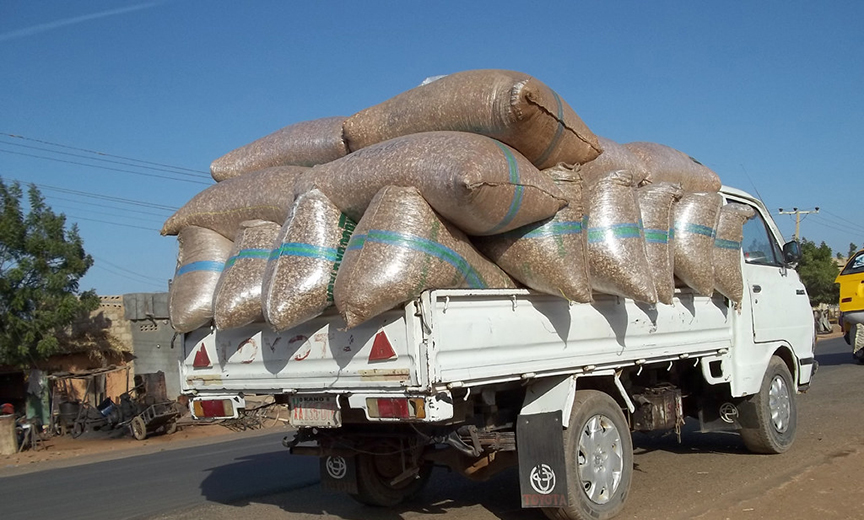
The work to ensure a clean product doesn’t end with storage. Getting the product to the consumer in good condition means monitoring the transportation conditions, as well.
Good practices for transportation include a plan to:
- Evaluate vehicles and transportation equipment. The design and maintenance of vehicles and transportation equipment should assure that food is not contaminated by the equipment itself during transport.
- Address transportation conditions. Measures should be taken to ensure food is not contaminated during transportation, such as adequate temperature controls and separation of food from non-food items in the same load.
- Exchange information. It is important to know information about prior cargo, how and when the vehicle was cleaned, and temperature control between the shipper, carrier, and receiver. For example, a carrier transporting bulk liquid non-dairy foods would want to ensure that vehicles that have previously hauled milk will not introduce allergens into non-dairy foods through cross contact.
- Train employees. Carrier personnel should be knowledgeable about sanitary transportation practices and have documentation of the training.
- Keep records. Carriers and shippers should keep written records related to transportation equipment cleaning, prior cargos, and temperature control.
If a product is shipped or received in a rail car, inspect the car to make sure that it meets certain standings. If the car doesn’t meet standards and cannot be fixed, reject that car. When evaluating a rail car or truck, make sure that:
- Interiors of all standard rail cars and trucks are clean and free of any dust, dirt, strings, tags, or other debris.
- Walls, ceilings, and floors of boxcars and trucks are free of any sharp projections such as nails, staples, wire cables, etc.
- Transportation containers are thoroughly checked for potential water leaks before loading. Doors and hatches should be tight fitting and provided with gaskets where appropriate.
- Rail cars or trucks are free of any unusual (off) odors such as paint, onions, ammonia, or other strong foreign scent.
- When receiving shipments, if pest contamination is found, inspect boxes or bags. If mice are suspected, a random inspection of bags or boxes should be performed with an ultraviolet light, which can identify traces of rodent waste. Shipments should be rejected if any rodent or insect activity is found.
- All received products should be transferred to pallets or skids. Product is never to be placed directly on the floor.
Peanut-specific GMPs
Bulk containers are often used to move peanuts. Bulk rail cars and trailers are sealed at all times except when cleaning, loading, or unloading. Before unloading, seals should be checked before removal to ensure no tampering has occurred. If seals are intact, the inside of the bulk unit should be visually inspected for cleanliness. If the bulk container is found unacceptable, reject, and contact the owner.
Bulk-loading systems should be routinely inspected.
When loading configuration is not specified, peanuts should be as evenly distributed as possible with the minimum number of space voids (open spaces between pallets or bulk sacks) to prevent loads from shifting.

